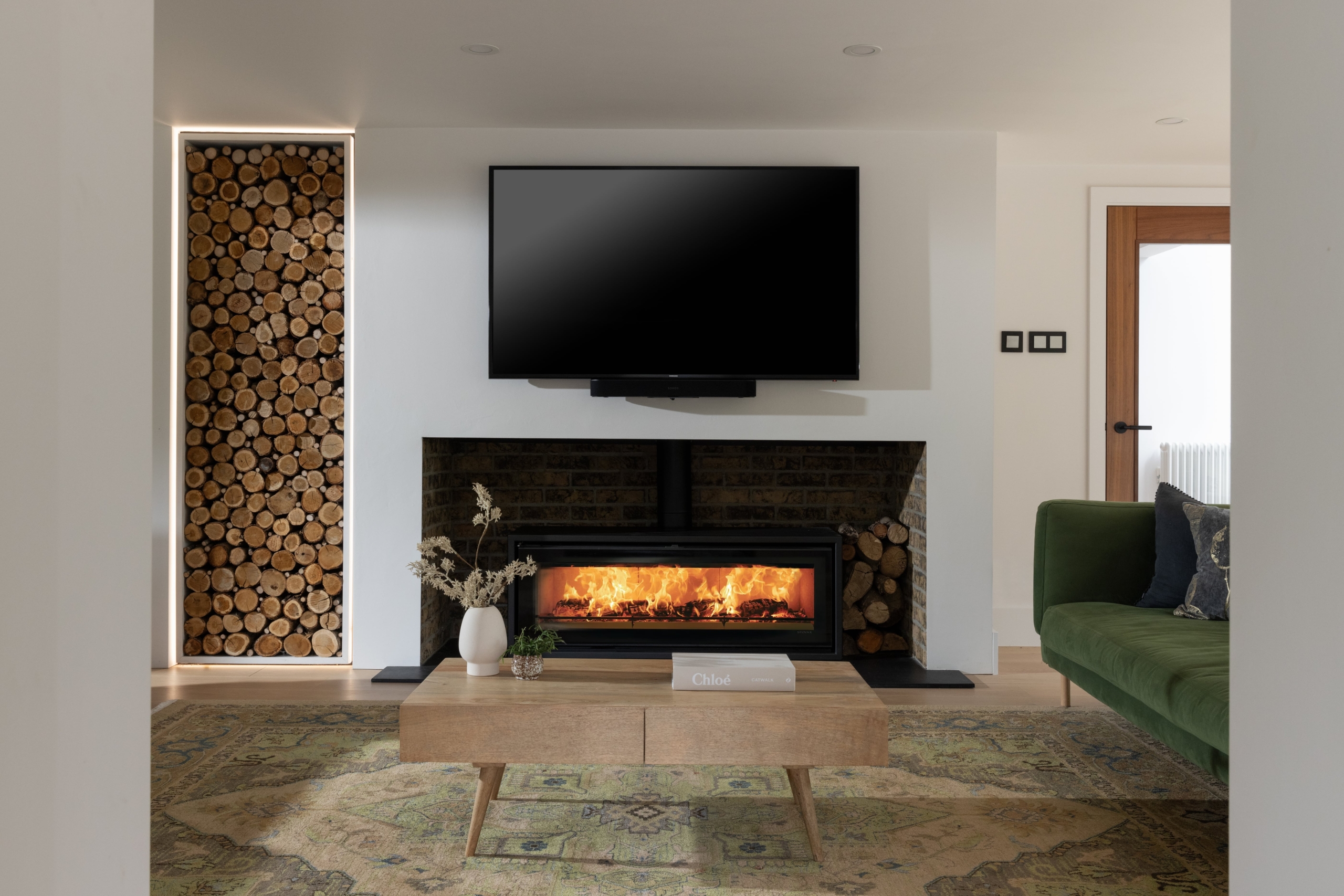Energy



SAP Calculations and Reports
The Standard Assessment Procedure (SAP) is the methodology used by the Department of Energy and Climate Change (DECC) to assess and compare the energy and environmental performance dwellings. The SAP is mandatory under Regulation L of the building regulations for newly built dwellings, which include any new dwelling that is formed either by construction or by conversion.
Its purpose is to provide accurate and reliable assessments of a dwelling’s energy performances. SAP works by assessing how much energy a dwelling will consume and how much carbon dioxide (CO2) will be emitted in delivering a defined level of comfort and service provision, based on standardised occupancy conditions. This enables a like-for-like comparison of dwelling performance.
SAP quantifies a dwelling’s performance in terms of: Energy use per unit floor area, a fuel-cost-based energy efficiency rating (The SAP Rating) and emissions of CO2. We work alongside approved SAP assessors to provide all the technical input into the design process in order to submit to the body who is providing you with the Building Regulation approval.
SAP EPC Reports are required on all new dwellings to show compliance under the current building regulations. They are produced using a combination of approved software and technical calculations. Laurence Associates are qualified SAP Assessors and are able to produce the following elements to produce the final SAP EPC Reports required.
Design Stage -Predicted Energy Assessment (PEA)
Completion-On Completion Energy Performance Certificate (OCEPC).
How it Works
SAP works by assessing how much energy a dwelling will consume when delivering a defined level of comfort and service provision. The assessment is based on standardised assumptions for occupancy and behaviour. This enables a like for like comparison of dwelling performance. Related factors, such as fuel costs and emissions of carbon dioxide (CO2), can be determined from the assessment.
A SAP Calculation indicates a score from 1 to 100+ for the annual energy cost based on:
The elements of the structure
The heating and hot water system
The internal Lighting
The renewable technologies used in the home.
Residential Developments
SAP EPC’s for newly built or converted or extended residential dwellings are required to be submitted to building control to ensure compliance with Building Regulation Part L. There are different elements to the Part L Regulations which we can provide SAP Calculations for.
Part L1A For Newly constructed Buildings;
Part L1B For existing buildings (refurbishments);
Part 1LB For highly glazed extensions.
From June 2023 all new planning applications for new build residential properties including annexes (excluding conversion schemes), to accompanied with SAP Assessment and Energy Statement to demonstrate compliance.
Laurence Associates are pleased to announce the launch of our newest service, SAP Calculations and Reports. Our team of accredited SAP specialists are ready to collaborate with you to enhance your building’s energy efficiency and environmental performance. Get in touch today to explore how our expertise can benefit your specific requirements.
Let's work together
Get in touch Read more

Dynamic Thermal Modelling (DTM)
The Dynamic Thermal Modelling (DTM) is performed using simulation programs which produce 3D models of buildings to calculate energy consumption, heat gains and losses, product daylight calculations and assess the environmental performance of a building.
The simulation programs leveraging real-time weather and solar data pertinent to the building’s geographical orientation. The software integrates a vast array of specifics, encompassing building infrastructure, mechanical and electrical systems, zoning activities, occupancy schedules, and HVAC protocols.
Through meticulous room-by-room yearlong simulations, a detailed assessment of the building’s performance is derived. These insights serve as a robust foundation for comprehensive building analysis and informed decision-making.
How it works
Assessment of Environmental and Security Parameters: Evaluating the environmental and security factors to determine viable methods for excess heat removal, such as assessing the feasibility of utilising open windows and defining parameters for their use.
Execution of Dynamic Thermal Modelling: Employing Dynamic Thermal modelling techniques tailored to the building’s specification to analyse heat dynamics and optimise thermal comfort.
Heat Gain Mitigation Strategies: Identifying and recommending measures to mitigate heat gains, encompassing optimal glazing specifications, external shading solutions, adjustments in glazing areas, and the integration of ceiling fans for efficient heat management.
Solution Proposal for Excess Heat Removal: Offering comprehensive solutions for heat dissipation, prioritizing open window option where suitable, deploying acoustic louvres, implementing mechanical ventilation systems, and, if necessary, utilizing mechanical cooling as a last resort.
Consensus on the Proposed Solution: Agree upon the most suitable solution for excess heat removal, ensuring alignment with building regulations.
Development of a Unified Strategy: Developing a cohesive and detailed strategy, clearly illustrating the recommended solution and its integration into the existing infrastructure for efficient heat regulation.
Overheating within building environments has emerged as a critical risk affecting both the well-being of individuals and the productivity of businesses across the UK. Alarmingly, estimations reveal approximately 2,000 heat-related fatalities occur annually in England and Wales.
In response to this pressing concern, new regulations have been instituted to safeguard occupants of newly constructed residential buildings, aiming to prevent instances of excessive temperatures that could compromise the health and comfort of residents.
Document O
The approved document O, in its 2021 edition specific to England, was officially issued in December 2021. It became enforceable for all Building Regulations pertaining to building notices, full plans applications, and initial notices concerning residential buildings submitted in England starting from the 15th of June 2022.
Laurence Associates is proud to introduce our latest offering, In-house Dynamic Thermal Modelling Services. Get in touch today to explore how our expertise can optimise your building’s thermal performance.
Let's work together
Get in touch Read more

Energy Statements
Local Planning Authorities now require a comprehensive energy statement as an integral component of proposed developments’ planning applications. The Energy Statements encompass both domestic and commercial projects, aiming not only to reduce CO2 emissions and compliance with various sustainability benchmarks as prescribed by Local Planning Authorities.
In addition to CO2 reduction, Local Planning Authorities may stipulate that a designated portion of on-site energy must originate from renewable resources. These requirements often extend to boarder sustainability objectives, such as attaining specific BREEAM Ratings or minimising water consumption.
Local Planning Authority regulations typically outline the targeted CO2 reduction necessary for compliance, often measured against Part L Building Regulations. These reductions could range from 10% to as high as 35%, contingent upon the specific requirements of the authority overseeing the development.
Given the vast requirements among Local Authorities, a thorough exploration of energy and sustainability requirements to the proposed development’s location is imperative. Our accredited team at Laurence Associates specialises in creating Energy Statements precisely aligned with your development’s location.
Cornwall Council Energy Statement Policy
In compliance with Cornwall Council’s Energy Statement Policy, all new developments within Cornwall are subject to specific energy guidelines effective from June 15, 2023.
For newly constructed homes, adherence to low energy consumption standards, supplemented by renewable energy sources, particularly Solar Photovoltaics (solar PV), is mandatory.
Major non-residential developments must aim for a BREEAM Excellent rating (or an approved equivalent) to meet Cornwall Council’s requirements.
Residential projects necessitate the submission of an Energy Report and Energy Summary Tool, encompassing a detailed SAP assessment for the proposed dwellings.
Non-residential developments exceeding 1,000m² require an Energy Report with an accompanying estimate for BREEAM certification (or an approved alternative) as part of the application process.
Laurence Associates specialises in delivering comprehensive Energy Statements essential for successful planning applications across diverse development projects, encompassing residential, commercial, and mixed-use domains.
Our team will follow your local planning regulations, engaging with planning officers to ascertain precise Energy Statement tailored to your development.
Conducting detailed SAP calculations and reports, we meticulously assess energy consumption and carbon emissions. Employing the energy hierarchy, we evaluate and demonstrate the attained reductions in emissions.
Leveraging our accredited experts, we conduct Dynamic Thermal Modelling (DTM) to simulate and showcase effective measures mitigating overheating risks within your development. Additionally, our team conducts water efficiency calculations to gauge and optimise water usage.
Contact us today to explore tailored solutions for your building’s location Energy Statements.